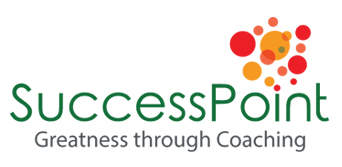When we think about leadership, we often think of leading others. We think of teams, organizations, movements and the like. But the most overlooked (and possibly essential) form of leadership is self-leadership. It’s the foundation for fulfillment in both career and life. Without it, you’re likely to drift, react, or live by someone else’s playbook.
So what is it?
Self-leadership is about becoming the CEO in your own life. It’s the ability to intentionally influence your own thoughts, behaviours and emotions in service of your goals, values and ultimately purpose.
At its core, self-leadership begins with self-awareness. It stands to reason that you can't lead yourself effectively, if you don't know who you are, and getting to know who you are means paying attention to your inner dialogue, recognizing your triggers and understanding your motivations. It’s noticing things like when you’re avoiding the hard conversations, when you’re procrastinating on meaningful work or when you’re doubting your worth. In noticing these things, it’s then about choosing a different response.
Next comes self-management. This is the discipline to act in alignment with your goals, even when it might be difficult. It could mean waking up early to write a chapter of your book, setting boundaries to protect your time, or saying no to distractions that would pull you off track. Self-leadership is about doing what needs to be done, not just what feels good in the moment.
Self-leadership also involves vision which is creating a compelling picture of who you want to become and the impact you want to ultimately have. Self-leaders don’t drift - they steer. They get clear on what matters most and then take ownership of moving toward it, one intentional step at a time.
The act of self-leadership if about responsibility, growth and alignment. It’s choosing to show up for yourself with intention. You direct your thoughts, behaviours, energy and time to be in alignment with your values and goals — even without external motivation. You are internally led, not externally pushed. You become the master of your own domain steering the ship toward your most desired and best.
Consider these examples:
… an aspiring entrepreneur or business owner, who finds themselves stuck in a draining job.
Rather than blaming others or circumstances, a self-leader might ask ‘what’s in my control?’ and then set about taking action. They might start learning new skills in the evenings, building a network, or begin a side project. They take these small, consistent actions that build momentum toward ultimately making the intentional leap towards their true vision.
… someone trying to write a book while also currently working fulltime.
Instead of bogging in ‘no time’ or blaming their fulltime job or other conditions, a self-leadership approach might take the form of blocking out 30 minutes every morning to write, turning off notifications during that time, reminding themselves daily of their bigger purpose, and when they miss a day — reflecting and learning, and showing up again tomorrow.
Pillars of Self-Leadership
- Clarity – Knowing who you are, what you value, and where you're going
- Discipline – Doing what matters most, even when and especially when, it's not easy
- Responsibility – Owning your choices and mindset
- Reflection – Making time to learn from experience
In building self-leadership, you might consider the triad of checking, tracking and committing.
CHECKING
Begin by seeking to build a daily habit of checking in with yourself. You can’t lead what you don’t understand. Consider and connect with what the ‘leader within you’ might choose if they were doing the driving.
Daily practises like journaling, mindfulness or simply pausing before you respond can help you notice your patterns, and eventually more easily shift them when needed.
TRACKING
Invest the time to track your energy and integrity. Notice where you are aligned and where you are not. Self-leadership means radical responsibility. You will need to stop blaming, complaining or waiting for permission. Ask yourself an empowering question instead: What’s one thing I can influence right now? Consider that even a small action — a difficult conversation, a re-organised calendar, a new habit — will move you forward.
COMMITTING
Without a clear sense of purpose, it’s so easy to drift. Commit to defining your big ‘why’, and what matters most to you. What are your values, vision and goals?
Ask deeply clarifying questions alike: Who do I want to become? What impact do I want to have?
Commit to 1 action daily that aligns with your values and overall purpose. When your actions align with your why, motivation becomes more sustainable.
Commitment also means protecting your most valuable resources - your time, your attention and our well-being. Be bold in setting boundaries that honour your priorities. Ensure the breaks and time out that you need to avoid burnout, and say no as you need to, to limit what drains you.
What of the implications of self-leadership when leading others?
If you want to lead others well, it starts here too. You can’t lead others well if you’re unclear or misaligned internally. The better you lead yourself, the more grounded, authentic and effective you’ll be in every other area of your life also. Your most important direct report is ultimately you, and when you lead you well, life and leadership become more fulfilling, authentic and sustainable.
Self-led individuals are not just productive, they are also intentional, and it’s a daily practise. Remember it isn’t a sprint — it’s a sustainable rhythm of action and renewal. It’s how you show up for yourself when no one’s watching. At times you may well fall short and make mistakes, so remember too, that it isn’t about being perfect. It’s about being responsible and kind. Keep learning, adjusting and most of all, keep going. Self-leadership is a muscle. The more you practice it, the stronger and more empowered you become — not just for your own life, but for the people you lead and serve.

